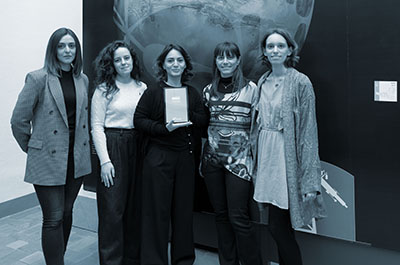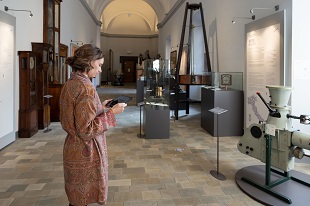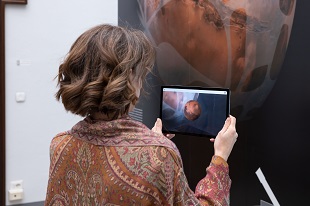
Thanks to the MARSS project (MusAB in Augmented Reality from Science to Society), funded by Fondazione Cariplo within the "Cultural Innovation Places" and of which the Department of Mechanical Engineering of Politecnico di Milano is a project partner, the Museo Astronomico di Brera (MusAB) has just opened a new visit modality based on two different Extended Reality technologies such as Augmented Reality and Virtual Reality.
Born in 2015 as a museum of the Italian National Institute of Astrophysics and recognized by Regione Lombardia as a museum collection, the MusAB hosts in the Gallery a collection of precious instruments used by the astronomers of Brera since 1760. The museum also includes the Schiaparelli Dome and the telescope used by the famous astronomer for the historical observations of the planet Mars.
The MARSS project aims to create a "speaking" museum collection, which can guide visitors to discover astronomy, its history, and the role of the Observatory in the context of the city of Milan, making MusAB a unique place in the national panorama: an extraordinary intersection of science and history.
The museum tour aims to illustrate the work of the astronomer, guiding the user through six sections (What does the astronomer do?, Observe, Discover, Measure, Represent, The observatory today). From March 2023, these sections will be enriched with multimedia clips, audio and Augmented Reality, developed by the research group of the Department of Mechanical Engineering of Politecnico di Milano, available to the user through an application downloadable on their own device. Two paths are available to the user: an adult path and a KIDS path designed for girls and boys aged 8 to 13.
The Augmented Reality clips can be activated by framing some illustrations placed inside the Gallery with the smartphone. By activating the augmented content, the narration will begin through 3D models, texts, audio, video, and descriptive images of the path. "With MARSS, we wanted to imagine and design a new interactive and engaging visiting experience at MusAB," says Marina Carulli, associate professor at the Department of Mechanical Engineering of Politecnico di Milano and responsible of the technological part of the project. "To realize this, we have created an application that can guide visitors to discover the way of thinking and acting of astronomers, putting at their service some Extended Reality technologies, increasingly widespread in various fields and effective in supporting imagination and learning." Considering the instruments present inside the Gallery and the educational content to be delivered, different approaches have been adopted for the design of Augmented Reality content of each clip: the virtual recreation of ancient astronomical instruments, the application of augmented content to explanatory graphic panels, and the application of augmented content directly to ancient astronomical instruments. Moreover, one of the most important themes related to the collection is that of Mars and the maps made by the astronomer Schiaparelli. To this end, a fourth approach has been adopted in order to simulate the exploration of the planet by astronomers over the centuries, with particular attention to the digital representation of its surface and the probes that have allowed its study.
During the visit, the user is called to make simple interactions (using the device's touch screen) becoming an active protagonist of the experience: for example, it is possible to follow the path of light inside the spectrograph, arrange the lenses inside the telescopes to correct their vision, try to estimate the distance between two objects in the sky.
The MARSS app also includes a "Spread Museum" section with 4 clips that the user can activate in four places in Milan of particular importance for astronomy: the Brera Palace, the Cupolino of the Botanical Garden, the statue of Boscovich in the Indro Montanelli Gardens, and the sundial of Milan Dome Cathedral.
Virtual Reality, on the other hand, allows visitors to explore the Schiaparelli Dome, otherwise accessible only in small groups for safety reasons. Using Oculus, users will be able to interact with virtual objects in the Dome, activating explanations and insights that will guide visitors from Giovanni Schiaparelli's studies to walking on the planet Mars.
"MARSS restores the citizen's connection with the sky and astronomy," explains Ilaria Arosio, content manager of the project for INAF OAB and responsible for educational services at MusAB. "For thousands of years, people have looked at the sky with the naked eye or through telescopes. Now, thanks to Extended Reality, we can empathize with the role of the astronomer, understand their challenges and actions, and understand that everything that appears so distant has countless connections with our daily lives, from measuring time and space to climate change, technological innovations, and life on the planet Mars."
The project was made possible by the skills of the Department of Mechanical Engineering of Politecnico di Milano based on the content collected and kept by the INAF – Osservatorio Astronomico di Brera, with the contribution of Engineering Associates, Zelda Compagnia Teatrale Professionale, Box Record and Fondazione Politecnico di Milano.





